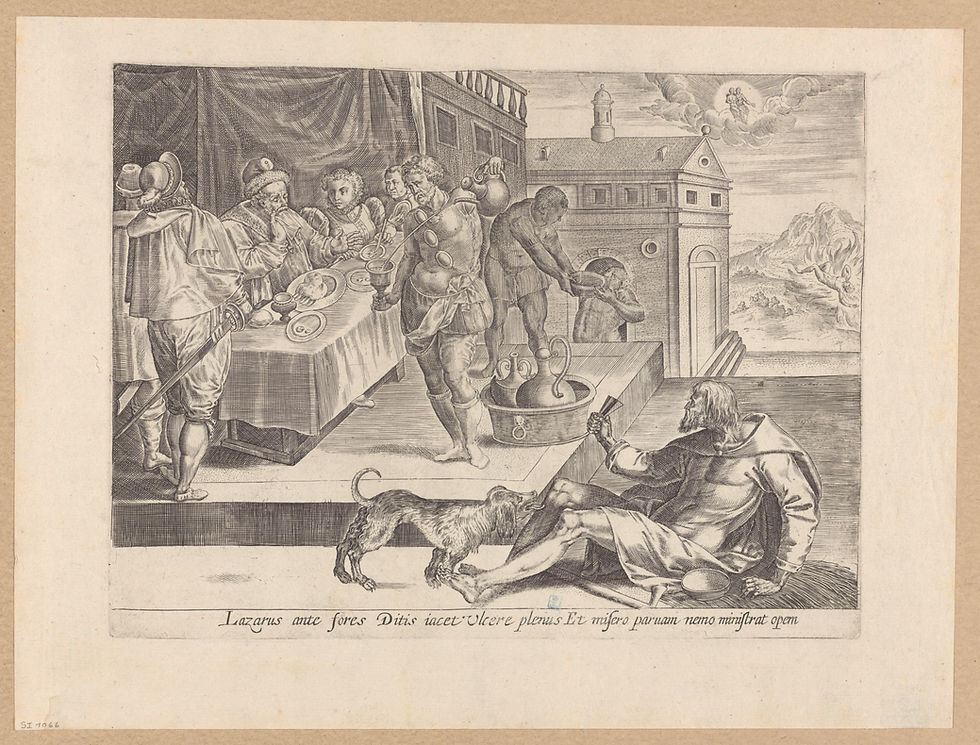Sunday Homily, 1 June 2025 – Fr Paul Rowse, OP
- paulrowse
- Jun 1
- 3 min read
Updated: Jun 8
When exactly did the ascension happen? When did the Son of God rejoin his Father in heaven?
The Church in her liturgy makes good use of St Luke’s chronology: forty days after his resurrection, we’re told, the Lord was taken up. That’s why the ascension is celebrated today, the nearest Sunday to that fortieth day, which was last Thursday.
But there is a way to make good sense of the timing of the ascension broadly understood, which will give this great feast its fuller meaning.
For that, we need to attend to certain Easter appearances of risen Lord: the appearances to Mary Magdalene, to the Ten and Thomas, and at Emmaus.
The risen Lord appears to Mary Magdalene very early on the first day of the week. He tells her: “Do not cling to me because I have not yet ascended to my Father and your Father.” It seems like the Son has a debt to pay his Father: he presents his risen body to his Father before much else happens. And so, while the Magdalene goes off to become the apostle to the apostles, the Christ ascends.
We keep going with Easter Sunday. In the afternoon of that great day, a wise stranger sidles up to two disciples walking to Emmaus and asks some searching questions. But we might ask where he was before that? And in the evening, when he breaks bread with them and vanishes, where does he disappear to?
On Easter Sunday, the Lord appears to the Ten, and on the following Sunday, to Thomas and the Ten. The risen Lord enters the room despite a locked door. Who was he with before he rejoined them, and where did he go afterwards?

What we’re coming to see is how the risen Lord was with his Father even before his ascension on the fortieth day. The ascension isn’t the Son’s reunion with his Father; that could be said to have happened on Easter Sunday: “I am ascending to my Father and your Father.” Instead, the ascension is the event from which the risen Lord no longer appeared to the disciples. On ascension day, the Lord doesn’t simply vanish from sight; he rises from the earth in a visual display reminiscent of the resurrection itself.
The ascension, then, is an event for us, to understand Christ’s proper place in the order of things. Because it’s not right that the Son of God should live with us. Earth isn’t heaven. Everything here is on its way out. Any nature documentary will show a creature’s mighty growth to pass through a small window of fertility before things begin to change for the worse.
How could the Lord of life remain here? If he did, he’d preside over our decline and demise. Or, perhaps if he kept on appearing, people would go and see him, like some kind of sideshow in the circus of life. The whole affair of an un–ascended Lord would be rather underwhelming.
So, instead of a spectacle, we have the mystery. Instead of experience, we have witness. Those who knew the Lord during his earthly life were given to see him in his heavenly life. And once that cohort of people have that good news firmly planted in their memories, by and large the Lord stops appearing. And they turn to us: our master and friend died, but God raised him up as leader and saviour.
The Son of God is always with his Father. They were never apart, not even in the depths of the Son’s pain nor while he sojourned to the souls in Hades on Good Friday night. “The Father and I are one,” he tells us.
This great feast, then, brings an end to Christ’s public ministry and the wait for the Holy Spirit begins, the Spirit who can abide with us on earth because he abides within us. He will keep the memory of the risen Lord fresh in our minds; he will lead us into all truth, and so prepare us for the day when we leave the world its demise and see the risen Lord face-to-face in light.
Fr Paul Rowse, OP Parish Priest


